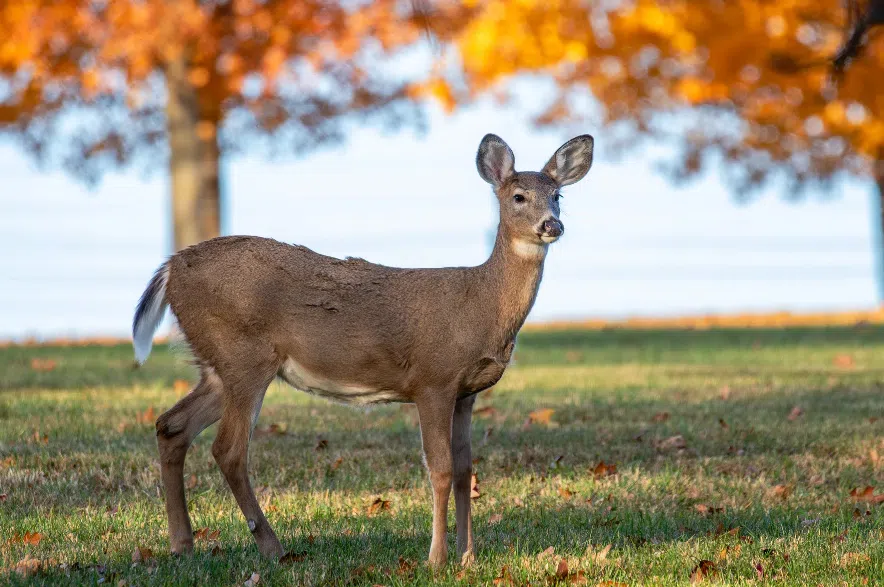Saskatchewan hunters will need to test their white-tailed deer, mule deer and elk carcasses for Chronic Wasting Disease (CWD) and Bovine Tuberculosis (BT) in certain Wildlife Management Zones (WMZs) this upcoming hunting season, says the Ministry of Environment.
The ministry is expanding its carcass disposal program. Hunters can discard their carcasses, carcass waste or meat from CWD-positive animals at designated disposal bins for free.
Read more:
- Before hunting this fall, check out the new mandatory game testing rules
- WATCH: Hundreds of deer and elk cause daily damage to Plunkett farm
- Turns my stomach’: Sask. man limits late-season elk hunting on his land
The mandatory TB testing will take place in WMZs 37 and 39 as a result of the confirmed cases in two separate cattle herds in 2023 and 2024.
To support long-term wildlife management, mandatory CWD testing will be conducted in WMZs 43, 47, 50 and 55.
“Monitoring wildlife health protects Saskatchewan’s vibrant hunting and agriculture economies. We rely on hunters to submit samples for testing, and we appreciate their co-operation and thank them for their continued support,” said Environment Minister Travis Keisig in a statement.
Hunters harvesting deer or elk in these zones during the draw or regular season must submit the animal’s head for testing within one month of harvest or by Jan. 21, 2026, whichever comes first.
However, all hunters are encouraged to voluntarily watch for CWD in all WMZs, including zones that don’t have mandatory testing. Samples from deer, moose and elk harvested anywhere in Saskatchewan can be submitted for CWD testing.
Submitting a sample for CWD or TB remains the same. Hunters can visit cwdsk.ca to register and receive a unique tracking number. Heads should be double-bagged with the tracking number securely attached to the bag and dropped off at any designated CWD drop-off location.
For hunters who want to keep and mount their head, sampling stations will be available in select locations where a technician will be available on-site to extract samples for testing. Hunters can visit saskatchewan.ca/bovinetb for more information about TB, including safe field dressing recommendations, how to submit a sample for testing, and a list of sampling station locations and hours.
Drop-off locations will be available throughout the province, and testing is provided free of charge for hunters participating in the provincial surveillance program. Since CWD was first detected in wild deer in Saskatchewan in 2000, the disease has now been found in 63 of the province’s 83 WMZs.
CWD results will be posted online at saskatchewan.ca/cwd with an expected turnaround time of four-six weeks.











